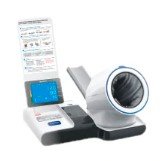Importing Surgical Instruments from Chinese Exporters: Ensuring Quality for US Medical Labs
Summary
- Understanding the process of importing surgical instruments from Chinese exporters is crucial for maintaining quality in medical labs and phlebotomy procedures in the US.
- Importers need to ensure that the surgical instruments meet the required standards and undergo rigorous quality checks before being used in healthcare settings.
- Collaboration between importers, manufacturers, and regulatory bodies is essential to guarantee the safety and effectiveness of surgical instruments in medical labs and phlebotomy procedures.
Introduction
As the field of medicine continues to advance, the demand for high-quality surgical instruments in medical labs and phlebotomy procedures in the United States is ever-increasing. With Chinese exporters being a prominent source of medical equipment, it is essential to understand the process of importing and verifying the quality of surgical instruments to ensure the safety and effectiveness of healthcare practices.
Importing Surgical Instruments from Chinese Exporters
Regulatory Requirements
Before importing surgical instruments from Chinese exporters, it is crucial for importers to be aware of the regulatory requirements in the United States. The Food and Drug Administration (FDA) governs the importation of medical devices, including surgical instruments, and ensures that they meet the necessary standards for safety and effectiveness. Importers must adhere to the FDA's Regulations to avoid any legal complications and ensure the quality of the instruments.
Quality Control Measures
Importers should implement stringent Quality Control measures to verify the quality of surgical instruments from Chinese exporters. This includes conducting thorough inspections of the instruments to check for any defects or imperfections that could affect their performance. Quality Control measures also involve assessing the materials and manufacturing processes used to produce the instruments to guarantee their reliability and durability.
Documentation and Certification
Importers need to obtain the necessary documentation and certification from Chinese exporters to ensure the authenticity and safety of the surgical instruments. This includes certificates of compliance with regulatory standards, Quality Control reports, and product specifications. Proper documentation is essential for verifying the origin and quality of the instruments and demonstrating compliance with regulatory requirements in the United States.
Verifying the Quality of Surgical Instruments
Third-Party Testing
One of the most effective ways to verify the quality of surgical instruments from Chinese exporters is through third-party testing. Importers can enlist the services of independent testing laboratories to assess the performance and safety of the instruments. Third-party testing helps to identify any potential issues or Discrepancies in the quality of the instruments and ensures that they meet the required standards for use in medical labs and phlebotomy procedures.
Collaboration with Manufacturers
Collaboration with manufacturers is crucial for verifying the quality of surgical instruments from Chinese exporters. Importers should work closely with the manufacturers to understand the production processes and Quality Control measures in place. By establishing a partnership with the manufacturers, importers can ensure that the instruments meet the necessary requirements and undergo thorough quality checks before being exported to the United States.
Compliance with Regulatory Bodies
Importers must comply with regulatory bodies in the United States to verify the quality of surgical instruments from Chinese exporters. This includes obtaining approval from the FDA and adhering to the agency's guidelines for importing medical devices. Collaboration with regulatory bodies helps to ensure that the instruments meet the required standards for safety and effectiveness and are suitable for use in healthcare settings.
Conclusion
Importing and verifying the quality of surgical instruments from Chinese exporters is a critical process for ensuring the safety and effectiveness of medical labs and phlebotomy procedures in the United States. By understanding the regulatory requirements, implementing Quality Control measures, and collaborating with manufacturers and regulatory bodies, importers can guarantee the quality of surgical instruments and maintain the highest standards of healthcare practices.

Disclaimer: The content provided on this blog is for informational purposes only, reflecting the personal opinions and insights of the author(s) on the topics. The information provided should not be used for diagnosing or treating a health problem or disease, and those seeking personal medical advice should consult with a licensed physician. Always seek the advice of your doctor or other qualified health provider regarding a medical condition. Never disregard professional medical advice or delay in seeking it because of something you have read on this website. If you think you may have a medical emergency, call 911 or go to the nearest emergency room immediately. No physician-patient relationship is created by this web site or its use. No contributors to this web site make any representations, express or implied, with respect to the information provided herein or to its use. While we strive to share accurate and up-to-date information, we cannot guarantee the completeness, reliability, or accuracy of the content. The blog may also include links to external websites and resources for the convenience of our readers. Please note that linking to other sites does not imply endorsement of their content, practices, or services by us. Readers should use their discretion and judgment while exploring any external links and resources mentioned on this blog.
